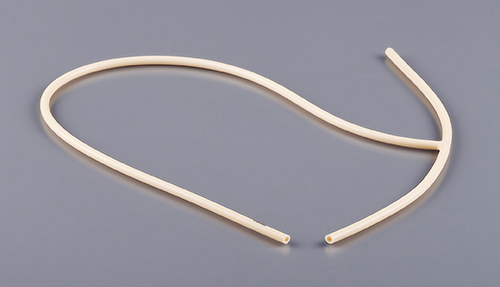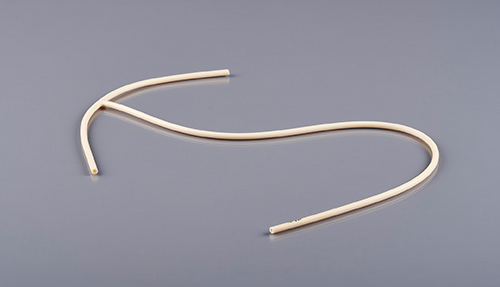

Medfirst offers the CE-marked and EU-MDR Kehr drain, a t-tube made of natural latex with silicone coating.
This device is inserted into the common bile duct during surgical procedures.
The Kehr drain is used during an open gallbladder surgery to drain bile. The T tube is often connected to a bile bag.

| Size | Reference 20cm x 40cm |
Stock |
| 10Fr | N01D051030 | in stock |
| 12Fr | N01D051230 | in stock |
| 14Fr | N01D051430 | in stock |
| 16Fr | N01D051630 | in stock |
| 18Fr | N01D051830 | in stock |
| 20Fr | N01D052030 | in stock |
| 22Fr | N01D052230 | in stock |
| 24Fr | N01D052430 | in stock |
| 26Fr | N01D052630 | in stock |
| 28Fr | N01D052830 | in stock |
| 30Fr | N01D053030 | in stock |

The Latex bile T-tube, also known as the Kehr drain, is a medical device used in the treatment of diseases of the gallbladder and bile ducts.
The Kehr Biliary tube is a specific type of drainage used in surgery to drain bile from the gallbladder. It is often used during a cholecystectomy, a surgical procedure to remove the gallbladder.
It has a T-shape, with one end positioned in this canal and the other end protruding through a small incision in the skin of the abdomen.
The bile T Tube, is inserted during the operation, usually through a small incision made in the abdominal wall. Once inserted, the drain is guided to the gallbladder where it is secured in place with sutures.
The biliary tube is then left in place for a variable period of time, ranging from a few days to several weeks, depending on the case.
When in place, the device allows the draining of bile that accumulates in the gallbladder after the operation. This reduces the pressure in the bile duct and helps to avoid complications such as leaks.
The medical instrument also allows for monitoring of bile production. Indeed, the amount of drained bile can be measured and analyzed to determine if its production is normal or not. If bile production is abnormal, it may indicate a complication such as obstruction or infection.
Improved Precision in Biliary Drainage:
The Kehr's t-tube Drain is designed to offer precise control of the biliary flow. It helps to prevent post-operative complications, such as biliary leaks or obstructions.
Reduced Risk of Infection:
By facilitating effective drainage and minimizing direct contact of the biliary tract with other tissues, the Kehr's drain significantly reduces the risk of infections, crucial for the patient's recovery.
Ease of Installation and Removal:
Designed with particular attention to maneuverability, the Kehr's tube can be easily installed and removed by the surgeon, making the process less invasive and more comfortable for the patient.
Post-Operative Monitoring:
This bile t-tube allows effective monitoring of biliary production after the operation and helps physicians to assess biliary function and quickly identify any potential complications.
Patient Comfort:
While safety and effectiveness are paramount, patient comfort is not overlooked. The t-tube is designed to minimize discomfort during the recovery period.
Versatility:
This system is suitable for various surgical procedures, making it useful in many clinical situations.
Hans Kehr was a German surgeon born on February 17, 1862 in Tettnang, Germany. He is known for developing a surgical technique called the "Kehr drain".
The Bile t-tube was developed in the early 20th century, at a time when cholecystectomy (removal of the gallbladder) was a risky and difficult operation.
This tube was a major advance in the treatment of cholecystitis (inflammation of the gallbladder) and obstructive jaundice (jaundice caused by obstruction of the bile ducts). The technique was also used in the treatment of cancers of the bile duct, by relieving symptoms of bile blockage.
Hans Kehr was a pioneer in the field of abdominal surgery and made significant contributions to the development of advanced surgical techniques for the treatment of abdominal diseases. He published numerous articles and books on surgery, which are still used as sources of information today.